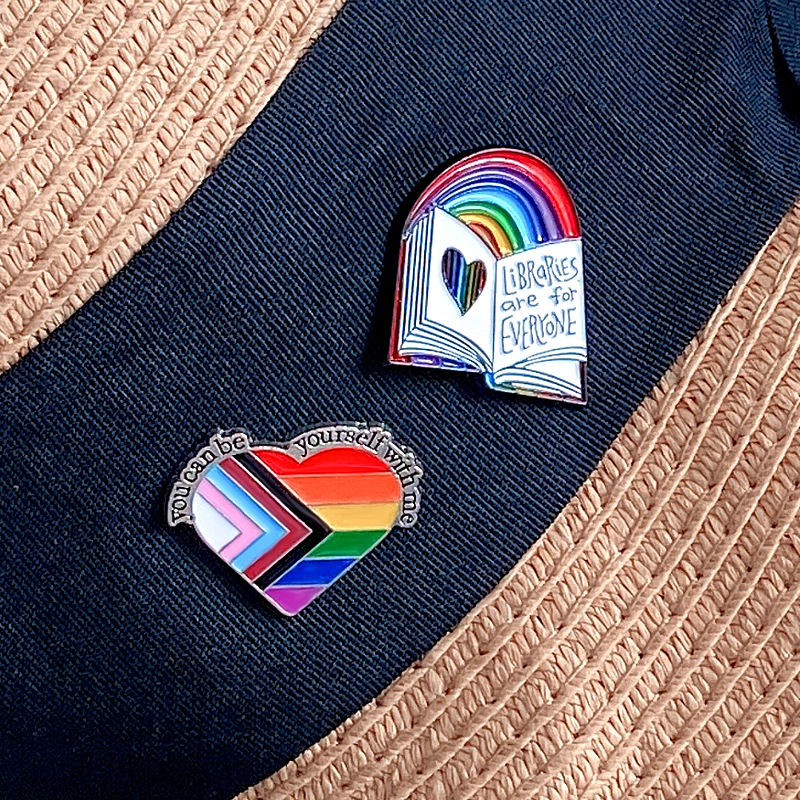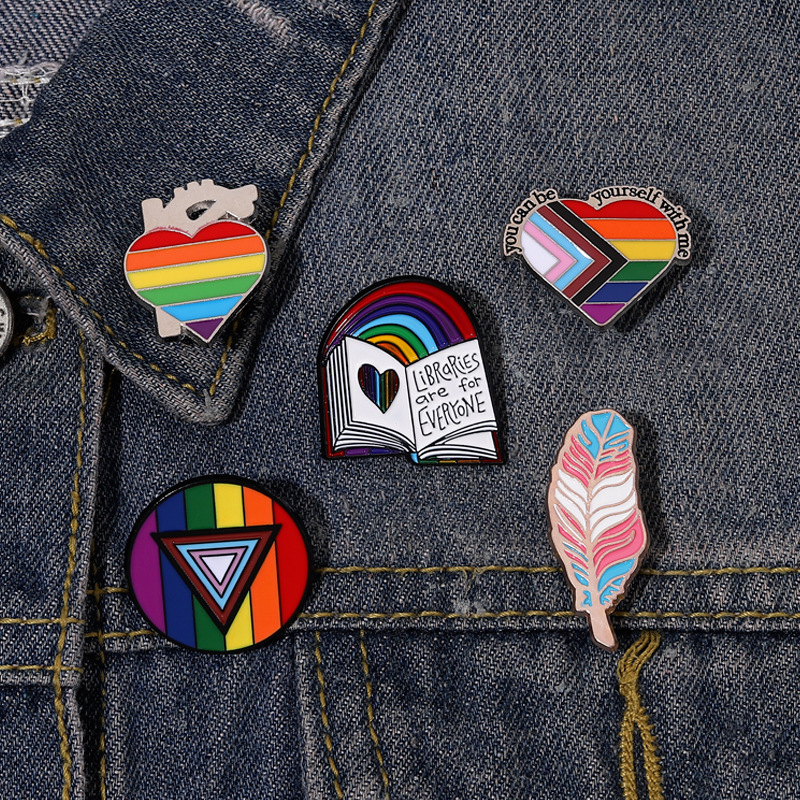Table of Contents
ToggleIntroduction
Enamel pins have evolved from simple accessories into powerful cultural symbols. These small, colorful pieces of metal serve countless purposes, blending fashion, storytelling, branding, and even activism into tiny wearable canvases. Whether adorning a jean jacket, promoting a cause, or celebrating a milestone, enamel pins speak volumes without saying a word. Their versatility makes them beloved by fashion lovers, marketers, collectors, and corporations alike.
At their core, enamel pins unlock creativity—they allow people to express their individuality or affiliations in a subtle yet impactful way. Unlike permanent tattoos or expensive jewelry, pins are affordable, interchangeable, and endlessly customizable. This is why they’ve thrived in streetwear, corporate branding, and even investment markets where limited-edition pins can become highly valuable collectibles.
In this deep dive, we’ll explore the many roles enamel pins play in modern culture. You’ll discover how they function as fashion statements, marketing tools, collectible treasures, fundraising assets, and employee recognition badges. By the end, you’ll see why these tiny accessories carry such big significance—and how you can leverage them for personal or professional use.
Fashion & Personal Expression
Enamel pins have secured a permanent place in the world of personal style. They act as miniature billboards for self-expression, allowing wearers to broadcast interests, affiliations, or inside jokes with a single glance. A denim jacket covered in carefully curated pins tells a story—each piece representing a favorite band, a nostalgic memory, or a touch of humor.
What makes enamel pins particularly special is their adaptability. They transition effortlessly from casual outfits to professional attire. A sleek, minimalist pin on a blazer lapel adds personality to corporate wear without appearing unprofessional. Meanwhile, clusters of quirky designs on backpacks or hats infuse everyday accessories with character.
For younger generations, pins function like digital profile badges—IRL (in real life) versions of the emojis and stickers they use online. They signal belonging to subcultures, fandoms, or social movements. A pin featuring a niche cartoon character might instantly connect strangers who share the same passion. This nonverbal communication makes them powerful social tokens in an increasingly digital world.
Unlike fast-fashion jewelry that gets discarded after a few wears, quality enamel pins often become long-term companions. Their durability and timeless appeal turn them into wearable nostalgia. Many people keep pins for years, transferring them from one bag or jacket to another as their personal style evolves.
Branding & Marketing Powerhouses
Forward-thinking companies have discovered that enamel pins pack serious promotional punch. In an era where consumers filter out digital ads, these tactile marketing tools cut through the noise. A well-designed pin does more than briefly promote a brand—it turns customers into walking ambassadors.
Trade shows demonstrate this perfectly. While paper flyers get tossed within minutes, attendees hold onto branded pins, often displaying them on work laptops or travel bags long after the event ends. This extended visibility makes pins one of the most cost-effective promotional items available. Businesses report higher recall rates from pin giveaways compared to traditional merchandise like pens or keychains.
The resurgence of collectible culture has further amplified their marketing potential. Brands like Starbucks capitalized on this by releasing seasonal enamel pin sets that customers eagerly collect. Each limited-edition drop generates buzz, with fans lining up to complete their sets. This strategy works equally well for small businesses—a cafe might reward loyal customers with a specialty pin after ten purchases, creating both exclusivity and repeat visits.
Collaborations between brands and artists demonstrate yet another smart application. When a streetwear label teams up with a popular illustrator for an exclusive pin series, both parties benefit from cross-promotion. The artist gains mainstream exposure, while the brand taps into the creator’s dedicated following. These partnerships often sell out rapidly, creating instant scarcity that fuels secondary market demand.
Perhaps most importantly, enamel pins humanize brands. In corporate settings, employee-worn pins displaying company values or achievements make large organizations feel more personal. Tech startups frequently use this approach, issuing playful pins that reflect their culture—a coding joke for developers or a mascot celebrating company milestones.
Collectible Treasures
Beyond their surface appeal, enamel pins have developed into legitimate collectibles with active trading communities. Serious collectors treat pins like miniature artworks or rare coins, carefully cataloging their acquisitions and tracking market values.
The Disney pin trading phenomenon illustrates this beautifully. What began as a simple souvenir option at theme parks grew into a global collector’s market. Enthusiasts travel worldwide to trade rare pins, with some vintage pieces selling for hundreds of dollars. Disney parks even host designated trading spots where visitors can barter pins cast members wear on special lanyards.
Independent artists have similarly elevated pins to art objects. Many illustrators release limited runs of hand-numbered pins featuring their signature artwork. These often sell out within hours, especially when associated with popular internet subcultures or memes. The aftermarket for these pieces can see prices multiply tenfold, turning casual buyers into savvy investors.
Several factors determine a pin’s collectible value. Scarcity plays the biggest role—pins with production runs under 100 units command premium prices. Authenticity matters too, with artist-signed or event-exclusive pins maintaining higher resale values. Cultural relevance also impacts worth; pins tied to viral moments or retiring Disney attractions become instant collectors’ items.
Online communities have formed around pin collecting, with dedicated forums discussing new releases and trading opportunities. Platforms like Instagram and Pinterest serve as virtual display cases where collectors showcase their prized pieces. Some enthusiasts create elaborate shadowbox displays or custom denim jackets that function as wearable galleries.
What began as childhood keepsakes have matured into serious collectibles. Today’s pin market mirrors the trajectory of comic books or sports cards—once considered simple entertainment, now recognized as legitimate alternative investments.
Charitable & Awareness Campaigns
Enamel pins have become powerful tools for social causes, transforming casual supporters into visible advocates. Nonprofits and activist groups increasingly harness the psychological power of wearable symbols to drive engagement far beyond what digital campaigns alone can achieve.
Consider the iconic pink ribbon pin. This simple enamel design revolutionized breast cancer awareness by giving people a tangible way to show solidarity. Unlike social media posts that disappear in feeds, a pin worn daily sparks continuous conversations. Colleagues notice it during meetings, strangers comment at coffee shops—each interaction reinforcing the cause’s visibility.
Modern activism has adapted this model brilliantly. LGBTQ+ organizations distribute rainbow-hued pins during Pride month that supporters proudly display year-round. Environmental groups create minimalist designs featuring endangered species, turning wearers into walking conservation billboards. The pins serve dual purposes: raising immediate funds through sales while creating lasting awareness through public display.
Schools and community groups have adopted similar strategies. A youth program might create custom pins representing anti-bullying messages, rewarding students who demonstrate kindness with wearable recognition. Unlike paper certificates that get filed away, these enamel badges become part of daily life, subtly reinforcing positive behaviors through visible symbols.
The durability of enamel pins makes them ideal for sustained campaigns. A single well-made pin can last decades, continuing its awareness mission long after the initial fundraiser concludes. Some vintage cause pins even become historical artifacts—civil rights movement pins from the 1960s now reside in museum collections, preserving social history in colorful metal.
Beyond fundraising, these small symbols create powerful psychological effects. Wearing a mental health awareness pin can make individuals feel less alone in their struggles. A disability rights pin visibly signals safe spaces for those needing accommodation. In office environments, allyship pins help marginalized groups identify supportive colleagues. The humble pin thus becomes both a awareness tool and a comfort object.
Corporate Culture & Employee Recognition
Forward-thinking companies are rediscovering the motivational power of enamel pins in workplace culture. In an era of remote teams and digital communication, these tangible recognition tools bridge the physical distance between organizations and their people.
Tech giants like Google and Adobe pioneered the use of playful achievement pins. New hires receive a “Noogler” (New Googler) pin featuring the company logo in bright colors—a wearable welcome that instantly fosters belonging. Milestone anniversaries are celebrated with increasingly elaborate pins, creating visible career narratives employees proudly display on lanyards or laptop bags.
Department-specific pins have emerged as powerful team-building tools. Engineering teams might earn a special pin after successfully launching a major product update. Sales staff could receive limited-edition pins for surpassing quarterly targets. These become more than rewards—they’re wearable stories that spark hallway conversations about professional achievements.
Safety culture programs have particularly benefited from pin recognition systems. Manufacturing plants award distinctive pins for accident-free work periods, creating positive peer pressure around workplace safety. The pins function as both individual motivators and collective reminders—when an entire shift wears their 90-day safety pins, it visually reinforces the group’s commitment to protective practices.
HR professionals note several advantages over traditional recognition methods. Unlike digital badges trapped in employee portals, pins travel wherever the recipient goes, extending company pride beyond office walls. They also democratize recognition—while “Employee of the Month” plaques honor one person, customized pins can celebrate entire teams or departments simultaneously.
The rise of remote work has added new dimensions to pin programs. Companies now mail carefully packaged recognition pins to distributed team members, creating physical touchpoints in digital work environments. Unboxing a commemorative pin during a virtual all-hands meeting delivers emotional impact that email announcements can’t match. Some organizations even build pin-trading elements into their culture, encouraging cross-departmental connections through limited-edition collectibles.
Conclusion: Small Pins, Endless Possibilities
The stories these tiny metal canvases can tell are limited only by imagination. What began as simple military insignia and souvenir kiosk trinkets has blossomed into a cultural phenomenon that touches fashion, business, activism, and personal identity.
Enamel pins thrive at the intersection of self-expression and shared experience. They allow individuals to discreetly signal their passions while enabling organizations to foster community. In our increasingly digital world, their tangible nature provides authentic connection points—whether that’s bonding with strangers over a shared fandom pin or feeling company pride when spotting a colleague’s recognition pin at the airport.
The most powerful aspect might be their accessibility. Unlike rare sneakers or luxury handbags that require significant investment, enamel pins offer democratic creativity—a student can express themselves as meaningfully through carefully curated pins as a Fortune 500 company can through corporate collectibles. This equalizing quality ensures their enduring relevance across social strata.
As we move toward more hybrid digital-physical lifestyles, expect enamel pins to evolve further. Augmented reality-enabled pins that unlock digital content when scanned. Eco-conscious pins made from sustainable materials. Even smart pins that change colors based on environmental data or social media engagement. The future remains bright for these miniature messengers of meaning.
The true magic lies in how something so small can carry such weight—in how pressing a pin into fabric can feel like planting a flag declaring “this matters.” Whether worn, traded, collected or awarded, enamel pins continue proving that great meaning often comes in small, colorful packages.



